#Sergey Yakovlev
Photo



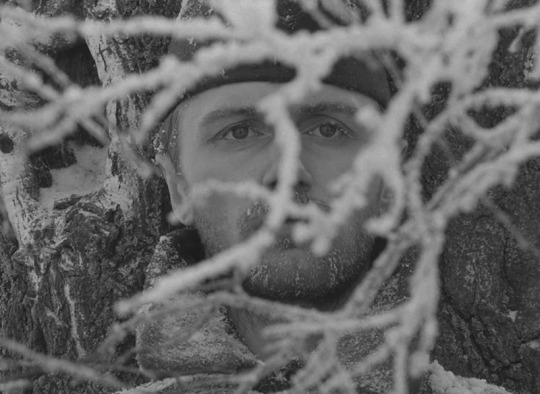
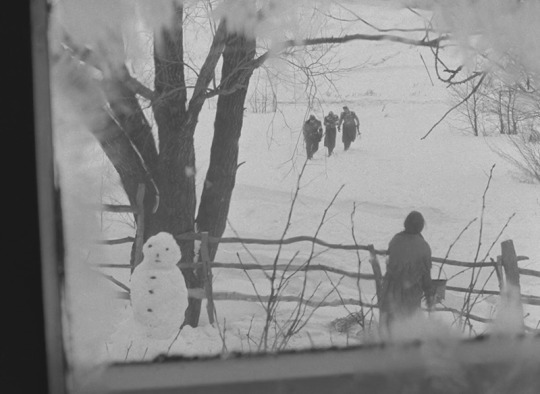


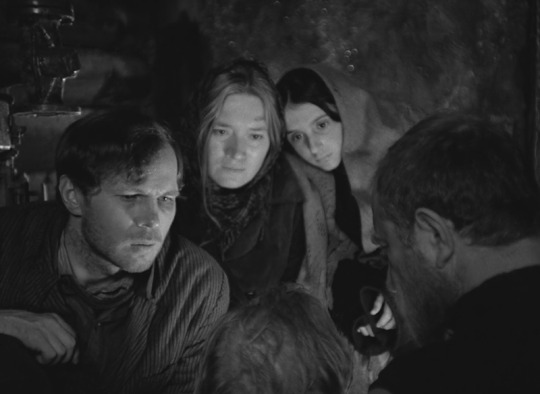
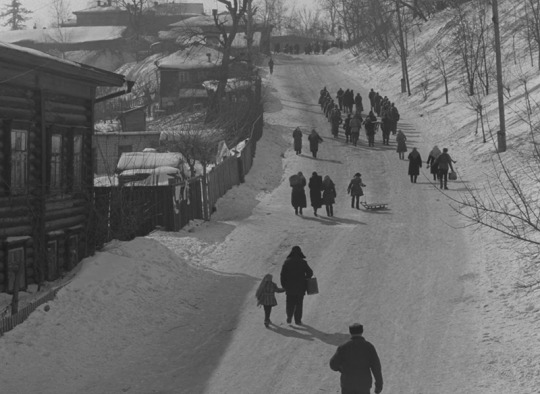
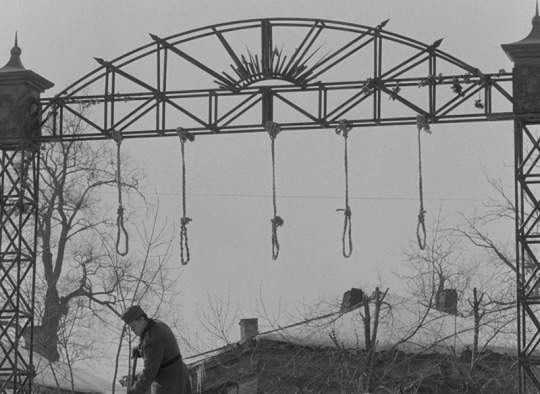
VOSKHOZHDENIYE (Larisa Shepitko, 1977)
#voskhozhdeniye#the ascent#la ascension#larisa shepitko#boris plotnikov#vladimir gostyukhin#sergey yakovlev#lyudmila polyakova#viktoriya goldentul#anatoliy solonitsyn#mariya vinogradova#nikolai sektimenko#sergei kanishchev#film#cine
33 notes
·
View notes
Text

The Ascent (Voskhozhdenie), Larisa Shepitko (1977)
#Larisa Shepitko#Yuri Klepikov#Boris Plotnikov#Vladimir Gostyukhin#Sergey Yakovlev#Lyudmila Polyakova#Viktoriya Goldentul#Anatoliy Solonitsyn#Mariya Vinogradova#Nikolai Sektimenko#Vladimir Chukhnov#Pavel Lebeshev#Alfred Schnittke#Valeriya Belova#1977#woman director
0 notes
Text




Segei came out as a bottom with this video 😔
322 notes
·
View notes
Text

Young Russian martial arts gymnast, Sergei Yakovlev b2008. Loves to show off on his social media accounts.
3 notes
·
View notes
Text

1 note
·
View note
Text
Languages in Russia Disappearing Faster than Data Suggests, Activists Warn
By Leyla Latypova
March 13, 202

Local residents in the village of Verkhneye Gakvari, which is inhabited by the Chamalals, an indigenous people of Dagestan.
Sergei Savostyanov / TASS
Hundreds of rare languages spoken by Russia's ethnic minorities are disappearing even more rapidly than recently-published census data suggests, activists and independent experts warned, as linguistic policies imposed by Moscow do little to preserve the country’s historic diversity.
In a recent blow, Russia lost one of its last indigenous speakers of Aleut, a language native to the Kamchatka region in Russia’s Far East and Alaska, in October.
Gennady Yakovlev, who passed away aged 86, was also one of the few remaining people to know and use the Medny Aleut dialect.
“The number of people who identify themselves as non-Russian and consider their native tongue their primary tongue is declining year-by-year because the space for using these languages is shrinking dramatically,” Tatar language activist Marsel Ganiev told The Moscow Times.
While official data — in particular figures from Russia’s 2021 census released in December last year — show a decline in linguistic diversity, activists and experts who spoke to The Moscow Times warned that the situation was even worse on the ground.
Other languages that appear headed for eliminationinclude Kerek, native to Russia’s Far Eastern Chukotka region, which is only spoken by one of Russia’s 23 living ethnic Kereks.
Another language native to Chukotka, Central Siberian Yupik, has just one active speaker remaining, according to the census.
In total, Russia has 193 ethnic groups who speak over 270 languages and dialects, according to official statistics. The greatest concentration of linguistic diversity can be found among the indigenous peoples of the North Caucasus, Siberia, the Far East and the Russian Far North.
The results of the 2021 censusshow that the number of speakers of nearly all of Russia’s minority languages declined over the decade since the previous population count.
The number of speakers of Chuvash, a Turkic language spoken primarily in and around the republic of Chuvashia in Russia’s Volga region, for example, dropped from over 1 million speakers in 2010to just over 700,000 in 2021.
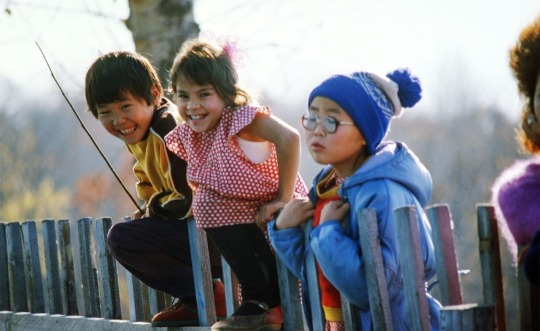
Nanai children in the village of Sikachi-Alan in Khabarovsk Krai, Russia.
I. Shagautdinov / TASS
Karelian, a Finnic language spoken primarily in the northwestern republic of Karelia, lost more than 11,000 speakers in the same period.
Despite these numbers, some activists and experts believe that the census paints too-rosy a picture when it comes to linguistic diversity.
“The number of speakers of the vast majority, or maybe even all, languages of Russia’s minorities is declining rapidly and that’s no secret,” linguist and co-founder of the Country of Languages, a digital platformfor language activists, Vasiliy Kharitonov said.
“But I’m not sure we can assess these dynamics through censuses.”
While official statistics might help to identify trends, they fail to capture the real number of active language users, according to Kharitonov.
For example, the 2021 census suggested the number of speakers of Nanai, once common in Siberia and northeast China, includes about 1,000 speakers under the age of 19.
“I haven’t yet met a single person of that age [under 19] who could be definitively labeled as a proficient speaker,” said Kharitonov, who previously worked on a program promoting the Nanai language among children.
Instead, the census data reflects a growing interest in Nanai rather than any real knowledge or day-to-day use, according to Kharitonov.
NEWS
Ethnic Minorities Hit Hardest By Russia’s Mobilization, Activists Say
READ MORE
The same concerns were echoed by Dashin Amgalan, a teacher of Buryat, a language native to the peoples of Buryatia, a republic in Siberia.
While the 2021 census suggested the number of speakers of Buryat increased from 218,557 in 2010 to 306,857 in 2021, Amgalan believes there was actually a decline.
“I don’t trust these numbers at all. The dynamic is linked solely to how the questions in the census were formulated,” Amgalan told The Moscow Times.
According to census forms publishedby Russia’s State Statistics Service, those taking part in the census were invited to identify up to three languages that they “spoke” as well as their “native” language with no indication of language proficiency.
“A person might be able to say just two phrases and consider themselves a Buryat speaker, though that is not true. Knowing just two phrases is not a sign of knowing the language,” said Amgalan.
The results of Russia’s 2021 census, which was delayed for a year due to the coronavirus pandemic, have been widely criticizedby sociologists and demographers for methodological errors and even some instances of data falsification.
As many as 42% of Russians admitted to having not participated in the census, according to a December surveyconducted by the independent Levada Center.
Despite Russia’s linguistic diversity, policymaking on minority languages is limited and there are few measures to preserve indigenous languages.
Existing programs aimed at protecting minority languages are stifled by a lack of funding, bureaucratic obstacles and a shortage of trained language specialists, according to experts.
With no state agency dedicated to the issue of language policy, most minority language measures in Russia are developed by the Education Ministry.
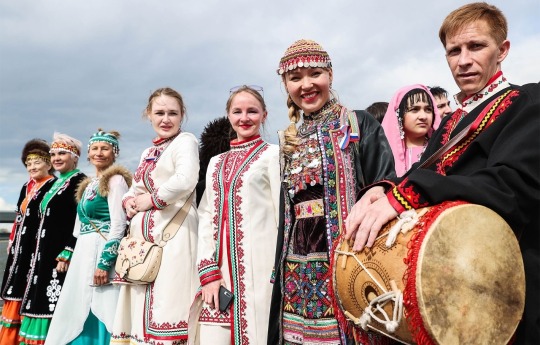
Russia Day in Kazan, Tatarstan.
Yegor Aleyev / TASS
“Education … could be called a basis for the knowledge and use of native languages,” said linguist Kharitonov.
“But education has a tendency to widen the use of Russian by means of sidelining minority languages.”
Kharitonov believes that the few examples of successful minority-language development programs were implemented “in spite of” the Russian government.
“The same could be said for many languages with good potential for survival such as those in remote areas of Tuva , the Yamalo-Nenets region and Dagestan. There, the languages were often preserved better because of the distance from so-called ‘civilization’ and, particularly, the trend for Russian monolingualism,” Kharitonov said.
Activist Ganiev believes that using minority languages in all spheres of life — “from kindergarten to the president’s office” — is the key to their preservation.
The republic of Tatarstan, which has been hailed for its success in maintaining and developing the Tatar language, offers one possible example.
Not only was Tatarstan a pioneer in education reform, quickly ditching Soviet-era language-teaching practices after 1991, but the Tatar language was mandatory for pupils of all ethnic backgrounds in the republic’s schools until 2017 when, under pressure from Moscow, it was made voluntary.
Even so, the number of speakers of Tatar — Russia’s largest minority language — declined by more than 1 million between the 2010 and 2021 censuses.
Despite the apparently relentless trend toward monolingualism, language activists and educators are not entirely despondent, pointing to a growing interest in learning minority languages.
The ongoing war in Ukraine may even fuel this process, according to some activists, as ethnic minority communities seek to distance themselves from the Russian invasion.
“Interest in Tatar has certainly grown since the start of Russia’s war in Ukraine,” said Ganiev, who runs a Telegram channelfor Tatar-language learners.
“People have become more interested in their ethnic identity and want to identify less as Russians and Russian-speakers,” he said.
“For them, the Tatar language … helps them to differentiate themselves.”
#indigenous#culture#indigenous russia#indigenous russian#russia#important#fypシ#colonization#fypage#landback#siberia#siberian indigenous#indigenous siberian#siberian#indigenous art#indigenous rights#indigenous people#important post#important read#endangered languages#endangered
10 notes
·
View notes
Text
⬇️ Tag drop ⬇️
Actors & Actresses
al st john
alan tudyk
aleksandr demyanenko
aleksandr trofimov
aleksei kuznetsov
alexandra yakovleva
alice lake
alice mann
alisa freindlich
alla demidova
anastasiya vertinskaya
anita page
andy whitfield
anne cornwall
barbara brylska
bartine burkett
ben barns
beulah booker
brown eyes
bruno ganz
buster keaton
conrad veidt
dmitri zolotukhin
dorothy christy
dorothy sebastian
edward norton
ekaterina savinova
eleanor keaton
evgeniy leonov
heath ledger
igor starygin
inna churikova
innokenty smoktunovsky
irene purcell
irina alfyorova
ivan pyryev
jack black
jason isaacs
joe keaton
joe roberts
karin boyd
kate beckinsale
kate price
kathleen myers
kathryn mcguire
klara luchko
klaus maria brandauer
larisa guzeeva
linda hamilton
liv tyler
luciena ovchinnikova
luke the dog
lyudmila gurchenko
marceline day
margaret leahy
margarita terekhova
marina dyuzheva
marion byron
marion mack
mikhail boyarsky
mikhail kozakov
mona maris
nadezhda rumyantseva
naomi watts
natalie talmadge
natalya krachkovskaya
natalya seleznyova
natalya varley
nora arnezeder
norman reedus
oleg menshikov
oleg tabakov
orson welles
paul bettany
paulette dubost
peter falk
phyllis barry
phyllis haver
renee adoree
rosalind byrne
roscoe arbuckle
ruth dwyer
ruth selwyn
sally eilers
sally o'neil
snitz edwards
sofiko chiaureli
sofiya pilyavskaya
sybil seely
tatyana lyutaeva
thelma todd
tilda swinton
tom hiddleston
valentin smirnitsky
veniamin smekhov
virginia fox
whitney houston
yanina zheymo
yelena ukrashchyonok
yuriy yakovlev
Characters
anne of austria
aramis
assol
athos
bagheera
baloo
buckingham
cardinal richelieu
constance bonacieux
d'artagnan
daryl dixon
edward rochester
geoffrey chaucer
grigori rasputin
king louis xiii
laura lyons
milady de winter
mowgli
peter the great
porthos
raksha
sarah connor
shere khan
van helsing
Origin
american cinema
american tv show
austrian cinema
barbie movies
behind the scenes
czech cinema
french cinema
german cinema
hungarian cinema
other peoplez edits
russian animation
russian cinema
silent cinema
soviet animation
soviet cinema
soyuzmultfilm
Directors
adolf trotz
aleksandr ptushko
aleksandr sery
alexander rowe
aleksey korenev
alla surikova
andrei tarkovsky
brian helgeland
don bluth
edward sedgwick
eldar ryazanov
gary goldman
georgi yungvald-khilkevich
gleb panfilov
igor maslennikov
istván szabó
james cameron
jim jarmusch
kirill mikhanovsky
leonid gaidai
mikhail shapiro
mikhail tsekhanovsky
nadezhda kosheverova
owen hurley
peter jackson
robert stevenson
sergey gerasimov
stephen sommers
svetlana druzhinina
vadim medzhibovskiy
vera tsekhanovskaya
vladimir menshov
wim wenders
Time Periods
1910s
1920s
1930s
1940s
1950s
1960s
1970s
1980s
1990s
2000s
2010s
Films & Shows
a cruel romance
a knight's tale
a man from boulevard des capucines
adventures of mowgli
anastasia
at the beginning of glorious days
back stage
barbie as rapunzel
barbie as the princess & the pauper
barbie in the 12 dancing princesses
barbie in the nutcracker
barbie of swan lake
battling butler
carnival night
cinderella 1947
clever dog sonya
college
coney island
convict 13
cops
d'artagnan and the three musketeers
dämen der frauen
daydreams
der himmel über berlin
doughboys
for family reasons
free and easy
gentlemen of fortune
give me liberty
go west
good night nurse!
hard luck
high sign
his wedding night
ivan vasilievich changes occupation
jane eyre 1943
le roi des champs-élysées
look for a woman
love and doves
maugli
midshipmen onwards!
mirror
moonshine
morozko
my wife's relations
musketeers twenty years after
neigbors
oh doctor!
one week
only lovers left alive
operation y and shurik's other adventures
our hospitality
out west
parlor bedroom and bath
pokrov gates
prince of foxes
prisoner of the caucasus or shurik's new adventures
scarlet sails
seven chances
sherlock jr
sidewalks of new york
spartacus: blood and sand
spartacus: gods of the arena
speak easily
spite marriage
steamboat bill jr
sweet november
terminator 2: judgement day
the adventures of sherlock holmes and doctor watson
the balloonatic
the beginning
the bell boy
the blacksmith
the boat
the bodyguard
the butcher boy
the cameraman
the cook
the electric house
the fellowhip of the ring
the frozen north
the garage
the general
the girls
the goat
the haunted house
the hayseed
the holiday
the hound of the baskervilles
the incredible hulk
the irony of fate or enjoy your bath!
the kuban cossacks
the lord of the rings
the love nest
the navigator
the painted veil
the paleface
the passionate plumber
the rough house
the saphead
the scarecrow
the walking dead
the wild swans
the words
this is your life
three ages
van helsing
watch out for the automobile
what - no beer?
wings of desire
young russia
5 notes
·
View notes
Photo
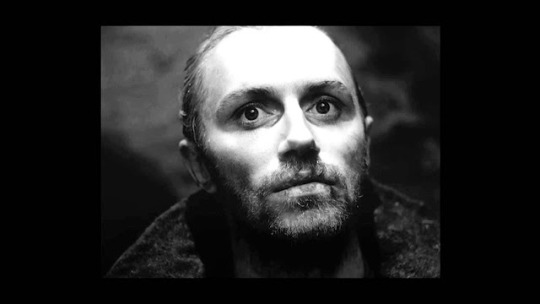
Boris Plotnikov in The Ascent (Larisa Shepitko, 1977)
Cast: Boris Plotnikov, Vladimir Gostyukhin, Sergey Yakovlev, Lyudmila Polyakova, Viktoriya Goldentul, Anatoliy Solonitsyn, Mariya Vinogradova, Nikolai Sektimenko. Screenplay: Yuri Klepikov, Larisa Shepitko, based on a novel by Vasiliy Bykov. Cinematography: Vladimir Chukhnov, Pavel Lebeshev. Production design: Yuriy Raksha. Film editing: Valeriya Belova. Music: Alfred Schnittke.
In some ways, The Ascent is the movie that the overpraised The Revenant (Alejandro González Iñárritu, 2015) could and perhaps should have been: a rewarding but harrowing story, made without flashy technology, that asks as much of the viewer as it did of the actors and crew. Made under extreme winter weather conditions -- temperatures dropped to 40 degrees below zero -- in January 1974, it tells the story of two Russian partisans in World War II, Sotnikov (Boris Plotnikov) and Rybak (Vladimir Gostyukin), who go in search of food for their small group of fellow resistance fighters. When they're spotted by some German soldiers, Sotnikov kills one but is wounded in the leg. Through deep and blinding snow -- there's a memorable scene in which Rybak has to thaw a frozen Sotnikov with his own breath -- Rybak helps Sotnikov reach a cabin where a young woman, Demchikha (Lyudmila Polyakova), who lives alone there with her three children, helps them hide in the attic. But they're discovered by the Germans and taken to their headquarters in a Russian village, where the head of the collaborating Russian police, Portnov (Anatoliy Solonitsyn), interrogates them. Portnov tortures Sotnikov first, branding a star onto his chest, but Sotnikov stoically resists. When Rybak is brought in, he assumes that Sotnikov has already told everything, so he proceeds to give Portnov as much information as he has. To his dismay, he is sentenced to death along with Sotnikov, Demchikha, and two others. Sotnikov, gravely ill, confesses that he killed the German and maintains that he alone of the five deserves execution. Rybak, on the other hand, persuades Portnov that he could be of use as a collaborating policeman, and is spared execution. After the others are hanged, Rybak becomes the target of the contempt of the witnessing villagers, who mutter "Judas" at him. Torn by guilt, he tries to hang himself but fails, and at the end is left to his misery. This was the last film by Larisa Shepitko, who died in an automobile accident at the age of 41. She and her actors and crew underwent great hardships filming it, coming down with frostbite, but the film was almost suppressed by the Soviet authorities, who thought it was too much of a Christian parable. In fact, Shepitko had insisted on an actor who resembled traditional images of Christ, and Plotnikov's lean, ascetic appearance is heightened by the cinematography of Vladimir Chukhnov and Pavel Lebeshev, especially as Sotnikov stands with the noose around his neck at the film's climax. Fortunately, Shepitko and her husband, director Elem Klimov, were able to gain the support of former World War II partisans who testified to the veracity and emotional power of the film.
6 notes
·
View notes
Text
4 notes
·
View notes
Video
youtube
Bob Schrijber vs Ruslan Kerselyan - M-1 MFC - World Championship 1997
This week’s rabbit hole was the first ever M-1 card. For those that don’t know, M-1 is Russia’s oldest MMA promotion. They’re 25 years old, though I’m not sure if they’re still in business as they haven’t hosted an event since 2020 and the only activity I’ve seen from them is on their VK account. They’re probably most infamous over here for being the reason that Fedor didn’t go to the UFC when Pride died. But as a fight promotion, they’ve had many notable fighters - Fedor, Alistair Overeen, Khabib Nurmagomedov, Sergey Kharitonov, Alexander Yakovlev, Daniel Weichel, Shahbulat Shamhalaev, Vadim Nemkov, and many more.
This fight above was featured as the last fight on their first ever M-1 card back in 1997. In one corner we have Armenian fighter Ruslan Kerselyan, whom I know nothing about. In the other we have Muay Thai fighter Bob Schrijber. He was training with guys like Rob Kaman and had one some local titles in the Netherlands. He would go on to have a decent career, though it was marked with a ton of high profile losses to guys like Wanderlei Silva, Semmy Schilt, Igor Vovchanchyn, etc. He is probably best known today as being the trainer for Stefan Struve.
But this fight is wild and a good reminder of how different this sport was in the 90s. Headbutts. No gloves. Guys grabbing the cage to pull themselves up off the mat. And one fighter trying to crank out a rnc without any hooks cause he doesn’t know how. Amazing.
3 notes
·
View notes
Text



🎬Battle on the Krupskaya Bulge
Berkowitz/Escobar
February 4th, 2024
💒Briefly, the so called Panama Papers case was a leakage of the Mossack Fonseca's firm (MSF) archive, which was disclosed and published, regardless of this action is a criminal offense: the commercial secrets, confidentiality, non-disclosure are the cornerstones of the US law with regards to any business, however, for this case the norms of criminal law were compromised. For many years, the MSF has been conducting operations related to incorporation, liquidation, accounting, trust management, and other related services. Criminals who illegally obtained confidential information and disclosed it claimed that this publication had resulted in the public disclosure of the names of politicians and public figures who were involved in an activity that could be considered as a 'conflict of interest.' Despite the Panama Papers data being illegally obtained and insufficient to draw conclusions or interpretations, many individuals from different countries were included on the list. Nevertheless, there were a lot of shameful publications that were propagandistic on the ICIJ website. The list excludes American politics, which is a remarkable fact. The rough conclusion is as follows. The German newspaper and website, which are funded by many US and doubtful organizations that do not reveal even their office locations, have published the stolen data. The data provided a general overview of the legal structures of various companies, and it was supplemented with conclusions based on unknown sources of information.
This context, presented together with the publications of stolen data, affected the reputation of many people and the industry of foreign jurisdiction services. Quick review of the published information demonstrated that in the documents were mentioned the legal entities apparently included into the legal structure of the Los Zetas drug cartel, considering the prefix ZZZ and the very specific style of names' giving, when every company got it specifically for every new project or transaction to launder money and inject them into the official economics turnover. Among the companies with the prefix ZZZ (Los Zetas), were listed their affiliates and related parties Alfa Group, and its subsidiary A1. Alfa Bank received the money from drug cartels via the chain of fictitious firms, and then used it to imitate crediting in affiliated retail companies. The money was returned to Alfa Bank and its satellites, such as Home Credit, Russian Standard, MKB, and others, in a clean and fresh condition after the completion of fictitious transaction 'credit payment.' As long as the amount of money to be laundered was undefined and depended on the separate transactions, both, the bank and the retail Laundromats, had the prepared blanket forms for crediting with an empty space left for the sum, which filled out based on the amount of each transaction. Participation in this 'crediting' was extended to other Alfa group banks and its retail Laundromats. The 'black cash office' was used by Alfa Bank and its satellites to credit the money of the drug cartels. Booking the deals on balance was done just in case of NPL. Despite the norms of federal law, Central Bank, Bazel's, and COSO requirements, none of the banks in the 'bank ring' issued properly documented credits and performed standard banking documentation and accounting procedures. Non-standard banking documentation was used to support the cases of illegal prosecution against Oleg Yakovlev and Sergey Bobylev. In reality, there were no credits taken, and the retail operation was owned by the same legal entities. Considering this, it can be concluded that no money was stolen from Alfa Bank as they did not leave the Alfa Bank legal group. MKB was an example of the one of the banks in the bank ring that were directly guided by US public officials on the Board. The forms of soft controls via credits, bonds, interbanking operations were also applied. Mass adoption has become fashionable because the distributed and complicated asset structure requires many trusting managers. Just Roman Avdeev brings up about 30 orphans fed by him for the future work to look after the property.
The Los Zetas and the Medellin, Sinaloa, CJNG, and Cali cartels came together to form one corporation that focuses on drug production and sale, smuggling, money laundering, terrorism, and serial murders. Panama's location has been widely known as their major hub for drug trafficking and money laundering for decades. The Panama Paper's list's failure to include US public authorities and individuals is a significant error in this context. Cocaine was trans-shipped to the United States as part of the illegal drug trade in Panama. The 1989 United States invasion of Panama to topple Dictator Manuel Noriega was justified in part by the need to combat drug trafficking. Nonetheless, the outcome was in the opposite direction. Noriega, the dictator of Panama from 1983 to 1989, had a relationship with the US Central Intelligence Agency (CIA) from the 1950s. Thus, all operations in Panama, were under the control of the CIA. Discovering the series of trading faces activities is easy when describing the CIA's activities in Panama through the remarkable ZR/RIFLE programs. No problem to identify the new image of the serial murderer David Berkowitz, whose mistakes in the appearance amendments, alongside with no changes in the behavior, allowed to match his personality with the new passport of the ZR/RIFLE mercenary issued in the name of Pablo Escobar, founder of the Medellin Cartel. Another one was El Chapo, the CEO of the Sinaloa cartel, who was taken back to the US by the imitating of El Chapo capture and extradition.
According to the 1988 Senate Subcommittee on Terrorism, Narcotics, and International Operations, Panama's General Manuel Antonio Noriega's story was considered one of the worst foreign policy miscues in the United States: "The failure of the US officials to act was largely the result of the relationships Panamisn official had developed with US intelligence and law enforcement agencies in performing services for them on a variety of matters, including drug enforcement." During the 1970s and 1980s, Noriega excelled at manipulating the US policy against his country, resulting in near-absolute power in Panama. It's clear that every US government agency that had a connection with Noriega ignored his corruption and drug dealing. Noriega was developing into a significant figure for the Medellin Cartel, which included the notorious Colombian drug lord Pablo Escobar created by the CIA's ZR/RIFLE program by the reincarnated David Berkowitz. Noriega was allowed to establish "the hemisphere's first 'narcokleptocracy.' The important component of the narcokleptocracy was the maintenance of the complicated legal structures dedicated for the drug trafficking and money laundering. Another element of the narcokleptocracy established by the CIA through the chain of its mercenaries, became drug wars with their inherent element - enormous atrocity and ritual serial mass murders. Thus, for Berkowitz this job was probably the one of the most intimate dreams: to legally commit murder, for which he was sentenced to 365 years in prison in the United States. Now we know what it means in the US justice system: to become a CIA mercenary and get official permission to commit serial murders in their interests without hindrance and with impunity.
Written by Meggi Göring. All rights reserved. 2024. Copyright by the BOOST.
🎞Follow:
#battleonthekrupskayabulge
Credits:
1. Berkovitz, L. D. (1976). Optimal Control Theory. The American Mathematical Monthly, 83(4), 225–239. https://doi.org/10.2307/2318209
2. Berenbaum, M. (1981). THE UNIQUENESS AND UNIVERSALITY OF THE HOLOCAUST. American Journal of Theology & Philosophy, 2(3), 85–96. http://www.jstor.org/stable/27943596
3. Senate Subcommittee on Terrorism, Narcotics, and International Operations. (2018). Report. National Security Archive. The George Washington University. https://nsarchive2.gwu.edu/NSAEBB/NSAEBB113/north06.pdf
4. Fox, J. A., & Levin, J. (1998). Multiple Homicide: Patterns of Serial and Mass Murder. Crime and Justice, 23, 407–455. http://www.jstor.org/stable/1147545
5. CONRATH, R. (1994). The Guys Who Shoot to Thrill: Serial Killers and the American Popular Unconscious. Revue Française d’études Américaines, 60, 143–152. http://www.jstor.org/stable/20872423
6. Seltzer, M. (1995). Serial Killers (II): The Pathological Public Sphere. Critical Inquiry, 22(1), 122–149. http://www.jstor.org/stable/1344009
7. Gresswell, D. M., & Hollin, C. R. (1994). MULTIPLE MURDER: A Review. The British Journal of Criminology, 34(1), 1–14. http://www.jstor.org/stable/23637717
8. Fox, J. A. (1992). [Review of Serial Murderers and Their Victims., by E. W. Hickey]. Contemporary Sociology, 21(3), 373–374. https://doi.org/10.2307/2076297
9. Miller, Laurence. “Serial Killers: I. Subtypes, Patterns, and Motives.” Aggression and Violent Behavior, vol. 19, no. 1, Jan. 2014, pp. 1–11, https://doi.org/10.1016/j.avb.2013.11.002.
10. Aamodt, M. G., & Moyse, C. (2003). Researching the multiple murderer: A comprehensive bibliography of books on specific serial, mass, and spree killers.Journal of Police and Criminal Psychology, 18(1), 61–85.
11. Tacke, A. (2014). The Desk Murderer and the Corporate Executive: (Re)concretizing the “Banality of Evil” in “The Specialist” and “The Himmler Project.” New German Critique, 123, 75–93. http://www.jstor.org/stable/43910634
12. Aamodt, Michael G., and Christina Moyse. “Researching the Multiple Murderer: A Comprehensive Bibliography of Books on Specific Serial, Mass, and Spree Killers.” Journal of Police and Criminal Psychology, vol. 18, no. 1, Mar. 2003, pp. 61–85, https://doi.org/10.1007/bf02802609. Accessed 27 Aug. 2019.
13. Mitchell, Heather, and Michael G. Aamodt. “The Incidence of Child Abuse in Serial Killers.” Journal of Police and Criminal Psychology, vol. 20, no. 1, 2005, pp. 40–47, maamodt.asp.radford.edu/Research%20-%20Forensic/2005%2020-1-Mitchell-40-47.pdf, https://doi.org/10.1007/bf02806705.
14. Knight, James R., and Jeffery S. King. “The Life and Death of Pretty Boy Floyd.” The Arkansas Historical Quarterly, vol. 58, no. 1, 1999, p. 120, https://doi.org/10.2307/40026285. Accessed 19 Nov. 2019.
15. Spierenburg, P. (2014). Toward a Global History of Homicide and Organized Murder. Crime, Histoire & Sociétés / Crime, History & Societies, 18(2), 99–116. http://www.jstor.org/stable/24570704
16. HIGGINS, M. (1997). Test of a Second-Generation Law: Plaintiffs seek to block a mafioso’s profits with revised “Son of Sam” statute. ABA Journal, 83(10), 28–29. http://www.jstor.org/stable/27840046
17. STEWART, D. O. (1992). Prisoner Rights Rebound: Inmates score victories in recent Supreme Court decisions. ABA Journal, 78(5), 48–50. http://www.jstor.org/stable/27830634
18. Cassell, P. G. (2006). Crime Shouldn’t Pay: A Proposal to Create an Effective and Constitutional Federal Anti-Profiting Statute. Federal Sentencing Reporter, 19(2), 119–124. https://doi.org/10.1525/fsr.2006.19.2.119
19. Okuda, S. S. (1988). Criminal Antiprofit Laws: Some Thoughts in Favor of Their Constitutionality. California Law Review, 76(6), 1353–1375. https://doi.org/10.2307/3480676
20. Pobutsky, A. B. (2013). Peddling Pablo: Escobar’s Cultural Renaissance. Hispania, 96(4), 684–699. http://www.jstor.org/stable/23608519
21. Mizrahi, E., Callegaro, A., Di Leo Razuk, A., Grasso, A., Namara, R. M., Quadrini, M., & Val, M. A. (2018). ENTRE NARCOS Y PABLO ESCOBAR, EL PATRÓN DEL MAL. In Pensar el fenómeno narco: el narcotráfico en los discursos audiovisuales (2010 - 2015) (pp. 45–64). CLACSO. https://doi.org/10.2307/j.ctvn96fhr.5
22. DEL POZO, J. G. (2011). PABLO ESCOBAR, ESE HOMBRE. NARRATIVA Y MITOLOGÍA DEL CAPO DEL NARCOTRÁFICO. Latin American Literary Review, 39(77), 80–100. http://www.jstor.org/stable/41478077
23. Gootenberg, P. (2012). Cocaine’s Long March North, 1900-2010. Latin American Politics and Society, 54(1), 159–180. http://www.jstor.org/stable/41485345
24. Duncan, G. (2014). Drug Trafficking and Political Power: Oligopolies of Coercion in Colombia and Mexico. Latin American Perspectives, 41(2), 18–42. http://www.jstor.org/stable/24575496
25. Plomin, R. (1983). Introduction: Developmental Behavioral Genetics. Child Development, 54(2), 253–259. http://www.jstor.org/stable/1129688
26. Jones, O. D. (2006). Behavioral Genetics and Crime, in Context. Law and Contemporary Problems, 69(1/2), 81–100. http://www.jstor.org/stable/27592124
27. Baker, L. A., Bezdjian, S., & Raine, A. (2006). Behavioral Genetics: The Science of Antisocial Behavior. Law and Contemporary Problems, 69(1/2), 7–46. http://www.jstor.org/stable/27592122
28. Kaye, D. H. (2006). Behavioral Genetics Research and Criminal DNA Databases. Law and Contemporary Problems, 69(1/2), 259–299. http://www.jstor.org/stable/27592129
29. Parens, E. (1996). Taking Behavioral Genetics Seriously. The Hastings Center Report, 26(4), 13–18. https://doi.org/10.2307/3527601
30. Davis, B. D. (1975). Social Determinism and Behavioral Genetics. Science, 189(4208), 1049–1049. http://www.jstor.org/stable/1740264
31. NAREMORE, J. (2006). Stanley Kubrick and the Aesthetics of the Grotesque. Film Quarterly, 60(1), 4–14. https://doi.org/10.1525/fq.2006.60.1.4
32. SCHLOBIN, R. C. (1988). Children of a Darker God: A Taxonomy of Deep Horror Fiction and Film and Their Mass Popularity. Journal of the Fantastic in the Arts, 1(1 (1)), 25–50. http://www.jstor.org/stable/43307979
33. Pina e Cunha, M., Rego, A., & Clegg, S. R. (2010). Obedience and Evil: From Milgram and Kampuchea to Normal Organizations. Journal of Business Ethics, 97(2), 291–309. http://www.jstor.org/stable/40929410
34. Church, D. (2011). Freakery, Cult Films, and the Problem of Ambivalence. Journal of Film and Video, 63(1), 03–17. https://doi.org/10.5406/jfilmvideo.63.1.0003
35. Hoeffel, J. C. (1990). The Dark Side of DNA Profiling: Unreliable Scientific Evidence Meets the Criminal Defendant. Stanford Law Review, 42(2), 465–538. https://doi.org/10.2307/1228965
36. Laboratory of Drug Geopolitics. (1999). World Atlas of Drugs. Moscow, The Way.
37. Gross G. (1897). Guide for forensic investigators. Smolensk.
0 notes
Link
The service was disabled last year The Internet for passengers may again appear on Aeroflot planes, as officially announced by the group’s general director Sergei Aleksandrovsky, speaking to reporters at the Eastern Economic Forum. During the event, an agreement was signed between Aeroflot and Yakovlev, which concerns digital aviation technologies. In particular, the agreement contains the clause “Increasing the comfort of Aeroflot passengers through the integration of on-board entertainment systems, including satellite communication systems, into aircraft.” [caption id="attachment_55931" align="alignnone" width="780"] Aeroflot planes[/caption] Internet may appear on Aeroflot planes Of course, this is in our joint plans with a partner who provides us with similar services for Western-made aircraft. Our partner, together with us and Yakovlev, will implement similar solutions on new domestic aircraft. We are also discussing with Russian providers the provision of Internet on board. In 2021, Aeroflot introduced Internet communications based on paid access for customers, but last year the service stopped working due to sanctions. Currently, you can only connect to the in-flight entertainment system. Sergei Alexandrovsky also said that Aeroflot is increasing passenger traffic and plans to end the quarter with “confident profit. ”
#Aeroflot_fleet#Aeroflot_Planes#Air_Travel#aircraft_models#Airline_Fleet#aviation#aviation_industry#commercial_aircraft#domestic_flights#fleet#international_flights#Passenger_Planes#Russian_aircraft
0 notes







